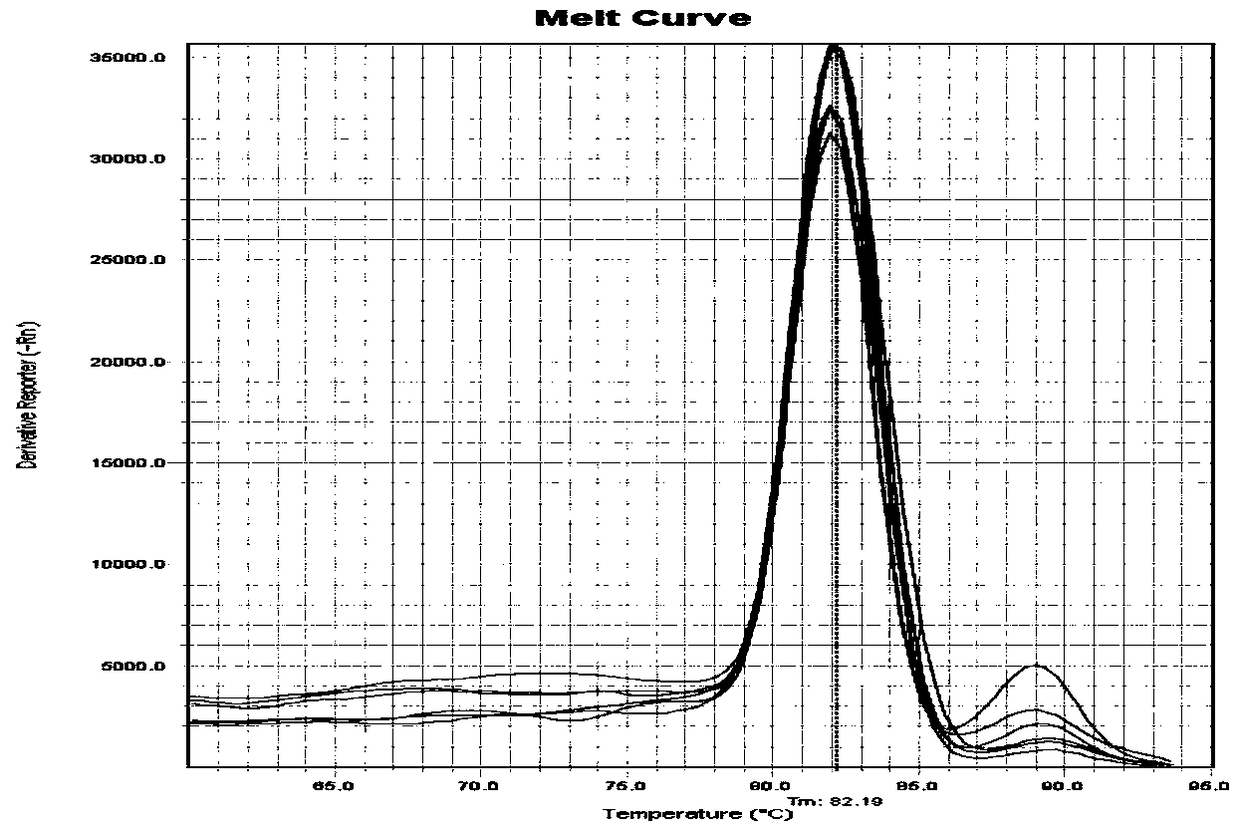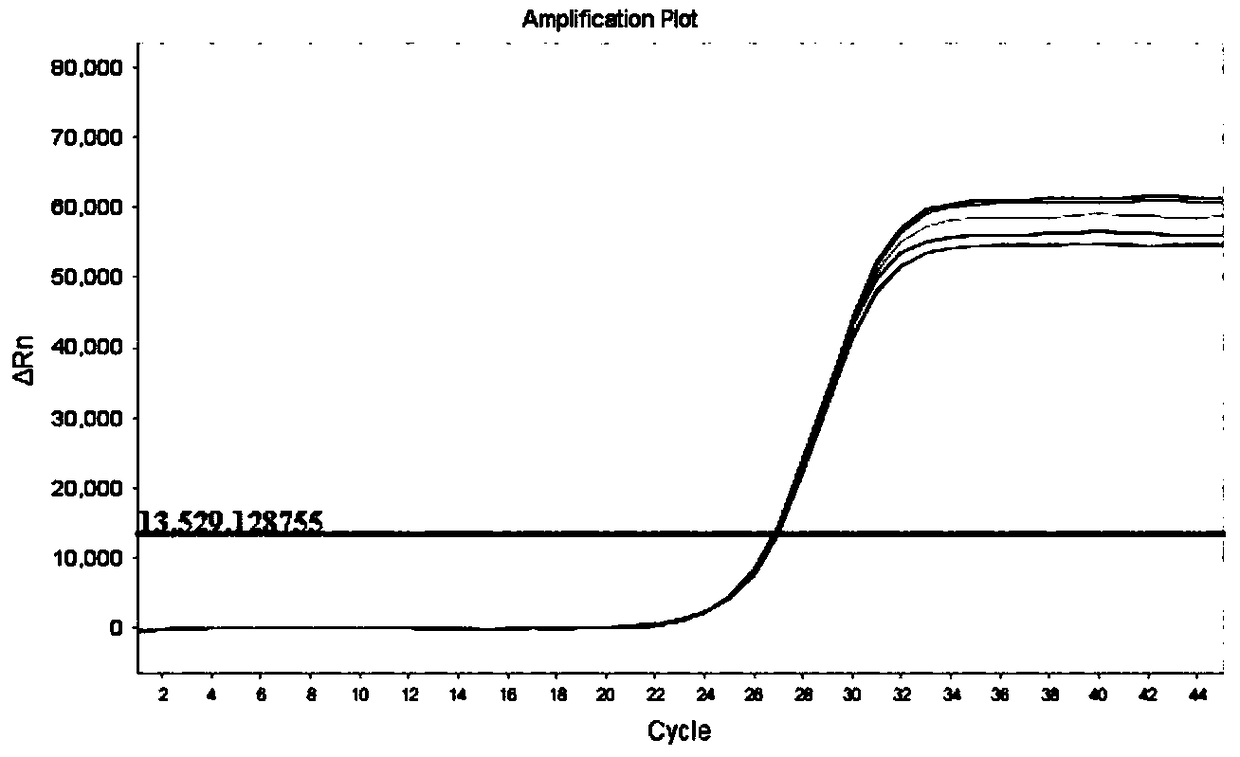Method for detecting expression of odorant-binding protein gene OBP6 of Italian bees by using fluorescent RT-PCR technology
A technology of RT-PCR and odor binding protein, which is applied in the direction of biochemical equipment and methods, microbe determination/inspection, etc., can solve the diseases and parasites in the bee breeding process, the destruction of the bee immune system and olfactory system, and the Problems such as group collapse can be achieved to shorten the experimental time, avoid subjectivity, and avoid pollution
- Summary
- Abstract
- Description
- Claims
- Application Information
AI Technical Summary
Problems solved by technology
Method used
Image
Examples
Embodiment 1
[0036] Obtaining the OBP6 gene sequence of the Italian honey bee
[0037] Open the Beebase (http: / / hymenopteragenome.org / beebase / ) database, enter the keyword OBP6 in the search bar, and search for the result of OBP6. Click on OBP6 to get its Beebase database gene number GB15813. Click to enter the gene description page, select the link of the NCBI (https: / / www.ncbi.nlm.nih.gov / ) database, enter NCBI, get the gene number LOC406109, and the mRNA number of Ref-seq is NM-001011593.1, Protein The number is NP-001011593.1, and the CDS (SEQ ID NO.5) and amino acid sequence (SEQ ID NO.6) of OBP6 are obtained.
Embodiment 2
[0039] Extraction of Total RNA from Apis mellifera
[0040] Two groups (three parallel samples in each group) of healthy Italian bees were selected to explore the effect of antibiotics on the expression of OBP6. The three bee colonies in the experimental group were fed for one week according to the instructions for the use of benomyl. The three bee colonies in the experimental group were fed with the same amount of sugar water for one week. After treatment, appropriate amount of Italian worker bees were selected and stored at -80°C.
[0041] (1) Take 10 Italian worker bees and place them in a sterile mortar, pour liquid nitrogen into them and quickly grind them thoroughly with a grinding rod. Set for 5min.
[0042] (2) Add 200 μL of chloroform into the centrifuge tube, shake vigorously for 5-10 minutes, and let stand for 5 minutes.
[0043] (3) Centrifuge at 12,000 rpm for 10 min at 4°C, transfer the upper colorless aqueous phase into a new sterile centrifuge tube, add 500...
Embodiment 3
[0048] cDNA synthesis
[0049] The total RNA of Apis mellifera described in Example 2 was used as a template. Take a sterilized 0.2mL centrifuge tube and add the following reaction system (20μL system):
[0050] (1) Add the following reagents to the nuclease-free PCR tube in ice bath:
[0051]
[0052]
[0053] (2) Gently mix and centrifuge for 3-5s. After incubating the reaction mixture at 65°C for 5 minutes, ice-bath for 2 minutes, and then centrifuge for 3-5s.
[0054] (3) Place the test tube in an ice bath, and then add the following reagents:
[0055] 5×RT Buffer 4.0μL
[0056] Thermo Scientific RiboLock RNase Inhibitor (20U) 0.5μL
[0057] RevertAid Premium Reverse Transcriptase (200U) 1.0μL
[0058] (4) Gently mix and centrifuge for 3-5s
[0059] (5) Carry out the reverse transcription reaction on the PCR instrument according to the following conditions
[0060] ①Incubate at 25°C for 10 minutes
[0061] ②cDNA synthesis at 50℃ for 30min
[0062] ③ Stop the...
PUM
 Login to View More
Login to View More Abstract
Description
Claims
Application Information
 Login to View More
Login to View More - R&D
- Intellectual Property
- Life Sciences
- Materials
- Tech Scout
- Unparalleled Data Quality
- Higher Quality Content
- 60% Fewer Hallucinations
Browse by: Latest US Patents, China's latest patents, Technical Efficacy Thesaurus, Application Domain, Technology Topic, Popular Technical Reports.
© 2025 PatSnap. All rights reserved.Legal|Privacy policy|Modern Slavery Act Transparency Statement|Sitemap|About US| Contact US: help@patsnap.com



